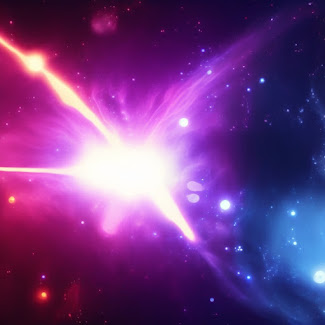What Is a Supernova?
A supernova is the name given to the cataclysmic explosion of a massive star at the end of its life. It can emit more energy in a few seconds than our sun will radiate in its lifetime of billions of years.
The sky above us is strewn with alluringly
beautiful remnants of ancient supernovae, that is, stars that lived out their
lives and then died in these violent explosions. In a galaxy like our Milky
Way, consisting of some 200 billion stars, there should be a supernova as often
as every 50 years. Yet supernovae visible to the eye alone are exceedingly
rare. You might – or might not – witness one in your lifetime.
What Causes a Supernova?
One type of supernova is caused by the “last hurrah” of a dying massive star. This happens when a star at least five times the mass of our sun goes out with a fantastic bang!
Massive stars burn huge amounts of nuclear fuel at
their cores, or centers. This produces tons of energy, so the center gets
very hot. Heat generates pressure, and the pressure created by a star’s nuclear
burning also keeps that star from collapsing.
A star is in balance between two opposite forces.
The star’s gravity tries to squeeze the star into the smallest, tightest ball
possible. But the nuclear fuel burning in the star’s core creates strong
outward pressure. This outward push resists the inward squeeze of gravity.
When a massive star runs out of fuel, it cools off.
This causes the pressure to drop. Gravity wins out, and the star suddenly
collapses. Imagine something one million times the mass of Earth collapsing in
15 seconds! The collapse happens so quickly that it creates enormous shock
waves that cause the outer part of the star to explode!
Usually a very dense core is left behind, along
with an expanding cloud of hot gas called a nebula. A supernova of a star more
than about 10 times the size of our sun may leave behind the densest objects in
the universe—black holes.
A second type of supernova can
happen in systems where two stars orbit one another and at least one of those
stars is an Earth-sized white dwarf. A white dwarf is what's left after a star
the size of our sun has run out of fuel. If one white dwarf collides with
another or pulls too much matter from its nearby star, the white dwarf can
explode. Kaboom!
Why Do Scientists Study Supernovas?
A supernova burns for only a short period of time, but it can tell scientists a lot about the universe. One kind of supernova has shown scientists that we live in an expanding universe, one that is growing at an ever increasing rate. Scientists also have determined that supernovas play a key role in distributing elements throughout the universe. When the star explodes, it shoots elements and debris into space. Many of the elements we find here on Earth are made in the core of stars. These elements travel on to form new stars, planets and everything else in the universe.
How long does a supernova last?
So, how long does a supernova take to explode? A few million years for the star to die, less than a quarter of a second for its core to collapse, a few hours for the shockwave to reach the surface of the star, a few months to brighten, and then just few years to fade away.
Can a supernova turn into a black hole?
Yes, a supernova can turn into a black hole. When a
star undergoes a supernova, it can either leave behind a dense remnant known as
a neutron star or collapse entirely into a singularity, forming a black hole.
The outcome depends on the mass of the star. If the star is at least three
times more massive than the Sun, it is likely to form a black hole after a
supernova. This occurs when the core of the star collapses under its own
gravity and becomes so dense that it creates a gravitational field so strong
that even light cannot escape, resulting in the formation of a black hole.















0 Comments